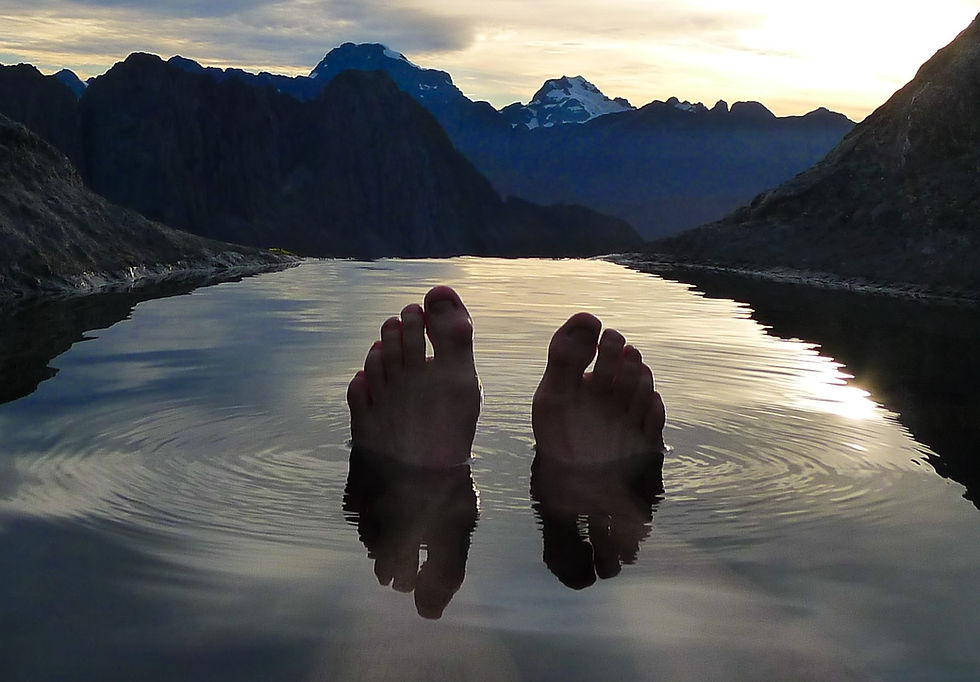Hands On Therapy
- Apr 24, 2020
- 4 min read
Updated: Sep 29, 2020
Touch – it’s a powerful sensory message, informing our mind and body. Skilled therapists can connect with a person at an elemental level and produce measurable changes. ‘But where’s the evidence?!’ went up the cry… Can we really influence healing rates, encourage balance in physical structure, create lasting change..? What’s best? There are a lot of options and professions out there: physiotherapists, osteopaths, rolfers; joint mobilisations, myofascial release, Swedish massage, Thai massage, acupressure, trigger point release. Approaches that measure change before and after an intervention stand up better to scrutiny, they hopefully allow a client to connect with a functional merit - a chance for better management and progression...

What really has the evidence is movement and exercise, so maybe we should just concentrate on that..? Some of the most learned and experienced bodyworkers in the world have tried sessions on anaesthetised clients, the outcomes were not so impressive. But here’s the answer, it’s what the client ‘feels’ during the session; does the sensory information they receive allow their ‘state’ to change, improve their kinaesthetic awareness? In turn can they take this awareness, along with an improved ‘state’ ( For more on this read my article ‘The Human Trampoline.’ ) into their everyday movements and exercise, sport? Now we’re getting there – the term is active treatment, the client’s sensory world is engaged and has the potential to fine tune its feedback systems. We have opened a door into better self-management and changed the trajectory of that person’s ‘skyrocket’ through life. How long does it last? It depends on how much sense it makes to that individual, do they need a big boost or a little nudge to put them on a better flightpath?
With a big toolbox, we have more choice of ways to inform the sensory system and give the best message to each individual, tie into their expectations and beliefs. In China acupuncture has been used to replace general anaesthetic for major heart surgery, massively reducing recovery time and associated risk factors. But if it was offered to someone who had never heard of it before, could we be confident of the results..?
As a practitioner, good tool selection comes with experience, assurance comes with research and measurement of outcomes. We build our own belief system of expected results, what will work for each human being that comes our way. We get good at steering round the pitfalls of pain guarding, unrealistic expectations and producing a therapeutic response.
Through my practice I have adopted different methods and fine-tuned them into what I see produce consistently good results. I still use spinal mobilisations, and joint mobilisations with movement, they work, but I like to look at the bigger picture first. Here I use two approaches routinely and try and incorporate them into a client’s everyday world.
Anatomy Trains (For more on this read my article ‘Anatomy – Structure and Function’) provides a great practical bodymap for assessing a client’s posture and coming up with ways of influencing it through hands on work, facilitating problem areas during functional movement and ingraining new patterns and ideas in everyday activities. But sometimes the body has found its best way round an issue and will hold onto this pattern as the only way it knows how to get the job done. Here I look to the work of South African maverick physio, coach and surfer Douglas Heel and his ‘Be Activated’ approach. It very much starts with the basics of establishing diaphragmatic breath and emergent ‘state.’ If we don’t address this, the client will continue to defend and protect, not allowing change...

From here we look at stimulating what have been called ‘neuro-lymphatic points’ or ‘Chapman’s Reflexes’ but also bear a striking resemblance to some of the Anatomy Trains neuromyofascial ‘lines,’ as well as the acupuncture meridians. They can be tender, instinctively guarded areas which may link to long held patterns the individual has developed as their best guess at function. Massage or ‘activation’ of these points sends a sensory wake up call to corresponding muscle groups. The routinely rapid responses suggest a neurological mechanism at work here. We start activating points on Myers’ primal ‘Deep Front Line’ and work our way outwards.

The approach is great for identifying common compensation strategies and attempting to stimulate more efficient movement patterns. We link into ‘before and after’ tests and functional movements to strengthen the client’s connection to what feels easier, more efficient. There is also a powerful self-management strategy here, as the client learns to massage these points regularly and feel for their deep supportive core engaging. They are the ones taking control of how their bodies react to challenge, how they feel – a profound message of positive feedback for the brain and nervous system. It’s this mind-body connection, interacting through complex neurochemical responses and stored memory, which is as yet not fully understood.
The effectiveness of hands on therapy is dependent on good clinical decision making and how the therapist connects with their client. We all have our own sense of what will do us good and what feels right, it’s a ‘store’ of consciousness that we’ve built up through our lives. This emotional intelligence needs to be respected and nurtured to get the best results. The good news is that it is fluid; positive sensory input, backed up by a link to confident functional movement can produce measurable change.


Comments